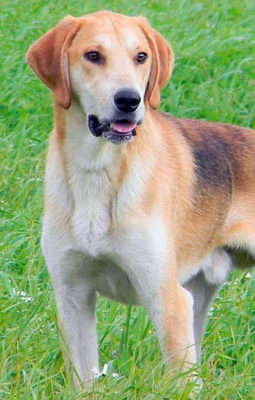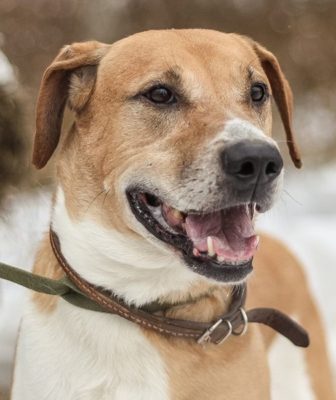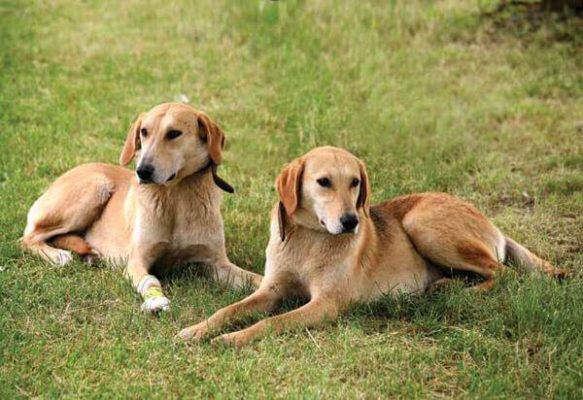Russian Piebald Hound
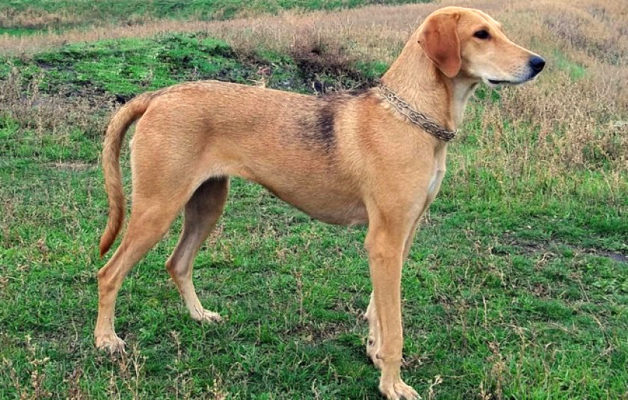
The Russian Piebald Hound breed is recognized as one of the most industrious. They are endowed with a calm and steadfast character. They combine a great storehouse of energy and a sharp mind. One dog seems to live two personalities: an efficient tracker and a loyal pet. At work, Russian Hounds are reckless and will not miss a single hunt. At home, representatives of the breed can become affectionate babysitters for children.
Table of Contents
Breed Information
| Another Name | Russian Hound, Oriental Hund |
| Origin | Russia |
| Height | Males 58-68 cm Females 55-65 cm |
| Weight | 25-30 kg |
| Fur | Short |
| Color | Crimson, white with red and black markings, shabrack, light shabrack |
| Lifespan | 12-16 years |
| FCI Classification | Breeds outside the FCI classification |
| Group | Hunting dogs, home dogs |
| Price | From $200 to $800 |
Breed Photos
Origin History
The Russian Piebald Hound is a common breed of dog in the world. Although at home, in Russia, it is not so popular. It is one of those breeds, the history of which generates controversy and is truly unknown. Russian zoologist Leonid Sabaneyev believed that Russian Hounds appeared in the Tatar-Mongolian period and nicknamed them Eastern Hounds. The name “Russian Hound” was given to the breed at the beginning of the 20th century. Professor Alexei Kamernitsky thought they came from the crossbreeding of “podsokolnye” dogs and local huskies brought to Russia in the X-XI centuries. The breed was officially introduced in 1874 at the All-Russian Hunting Dog Show.
The Civil War, the revolution, and later the USSR’s emergence suspended the study and development of oriental hounds. Moreover, many specimens living in noble families were destroyed. A ray of light in the history of Russian Piebald Hounds appeared only in the 1920s: field trials began, new methods of determining the success rate appeared. In 1923 the First All-Union Exhibition of Dogs and Hunting Goods was held. About 50 representatives of the breed were presented there.
The first official standard for Russian Hounds was adopted in 1925 at the First All-Union Congress of Cynologists. And the current standard was approved by the Presidium of the RKF in 2015. But the fateful year for the breed was 1939. It was then that all hounds, except for Russian and Russian Piebald Hounds, were officially banned from breeding. After eight years, the first requirements for awards and diplomas appeared. And modern ones were formed closer to 1981.
Appearance
Russian Piebald Hounds are a large breed with a muscular build and massive teeth. They are often compared to wolves. When hunting, they are highly visible, and the dogs keep their head down, similar to the representatives of forest predators.
The head and muzzle of oriental hounds are slightly elongated. The floppy ears are triangular. The nose lobe is dark and large. The eyes of representatives of the breed take on a dark brown hue.
The limbs and tail of Russian Hounds are medium lengths, and the paws are oval-shaped. The dogs are covered with double medium-short hair. But throughout the body, the cover is heterogeneous. As for the color, the typical representative of the breed has a purple or gray-shabrack shade with pale underpants.
Character
The Russian Piebald Hound breed is recognized as one of the most industrious. They are endowed with a calm and steadfast character. They combine a great storehouse of energy and a sharp mind. One dog seems to live two personalities: an efficient tracker and a loyal pet. At work, Russian Hounds are reckless and will not miss a single hunt. At home, representatives of the breed can become affectionate babysitters for children. It is difficult to drive them out with childish antics and restless games. But with other pets – cats and small animals – things are not so friendly. It is not strange: hunting dogs see them as prey.
Despite the breed’s size and muscular build, Russian Hounds are not very suitable for watchdog activity. But they can make noises toward evildoers and strangers loudly. The breed is more designed for effective hunting. Therefore, the ideal master for Russian Piebald Hounds is considered an avid hunter with a strong character. If the dogs feel weak, they will immediately begin to dominate. Representatives of the breed with ease lend themselves to training, and the earlier – the better. Regularity and an individual approach are important here.
Care
The good news is that Russian Piebald Hounds do not require careful grooming. At the same time, the breed is quite clean. The only obligatory point is combing the hair. During the molting period, it is recommended to include this procedure in the daily routine and long walks in nature. It is better to bathe the dog not more than three times a year. In winter, you can rub the coat with snow, and in summer, let it bathe in a lake or river.
It is important not to forget to take care of your ears. It is worth stocking up on tissues and pulling out the wax buildup from time to time. After walks, don’t forget to check your pet’s paws for splinters. And regularly remove dust and mucus clumps from his eyes with a chamomile syrup cloth.
The ideal habitat for the breed is a spacious aviary on private property. Hay and/or fallen leaves are good for bedding. It is also important to arrange a bright stream of daylight for Russian Hounds. Darkness develops rickets in them. Dogs don’t get along in apartments because they love freedom. Also, cynologists claim that heated living areas have a bad effect on the dogs’ performance and character.
Training
It is recommended to start training no later than three months of age. At this age, the dog should have a name, respond to it, and know simple commands: “Foo”, “Sit”, “Come here”, etc. You should not forget about praise: your favorite pet will be pleased to hear “Well done” and get a yummy treat. It’s better to forget about aggression and malicious tone. Russian Piebald Hounds are wise and witty dogs. Any negativity will work against you.
Representatives of hunting dogs are better fed by creating a ritual. For example, before eating, make a sound of a hunting horn. Before that, the Russian Piebald Hound should not touch the bowl with food. It is also a breed that loves long walks and regular training in nature. Already from early childhood, it is worth training the dog to explore the area. This way, he will understand who can become his prey and who should not be touched.
Common Diseases
A dog’s illnesses are more dependent on its pedigree. The current experiments with crossbreeding have a bad effect on the health of the animals. Common ailments of Russian Piebald Hounds include:
- degenerative myelopathy – problems with the spinal cord;
- myositis is an inflammation of the muscles;
- conjunctivitis – develops due to eye sensitivity;
- hip dysplasia – joints are not fully developed, which negatively affects the musculoskeletal system.
Nutrition
Dogs love lean meat, by-products, ocean fish, vegetables, porridges, and fermented dairy products. But you should not feed Russian Hounds food intended for humans. Spices in the composition and other stimulants are not suitable for dogs. Tubular bones and too hard food are also better to exclude not to put the pet in danger. If the dog has a predominantly natural diet, it is worth taking care of vitamin and mineral supplements during the fall and winter. By the way, premium food is also suitable for feeding Russian Piebald Hounds. Therefore, cooking delicacies for the pet regularly is not necessary.
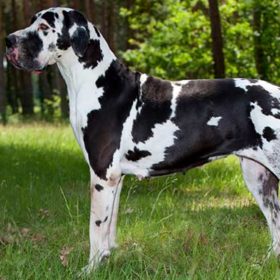 Great Dane
Great Dane Tatra Shepherd Dog
Tatra Shepherd Dog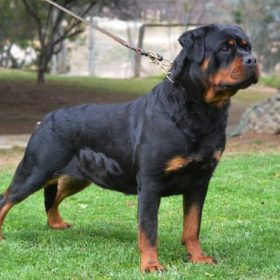 Rottweiler
Rottweiler Belgian Shepherd Laekenois
Belgian Shepherd Laekenois American Bulldog
American Bulldog Ariégeois
Ariégeois